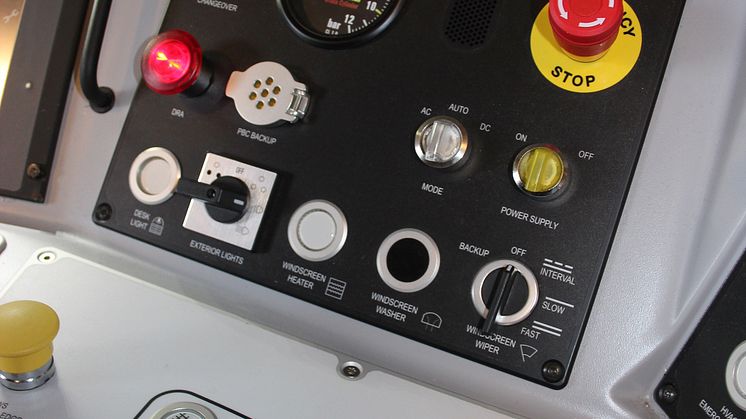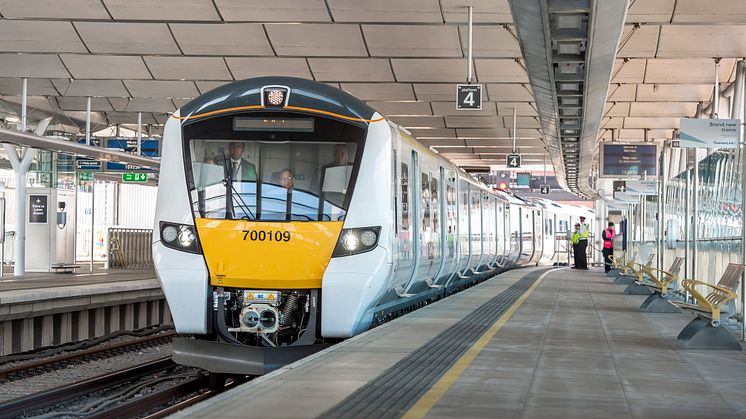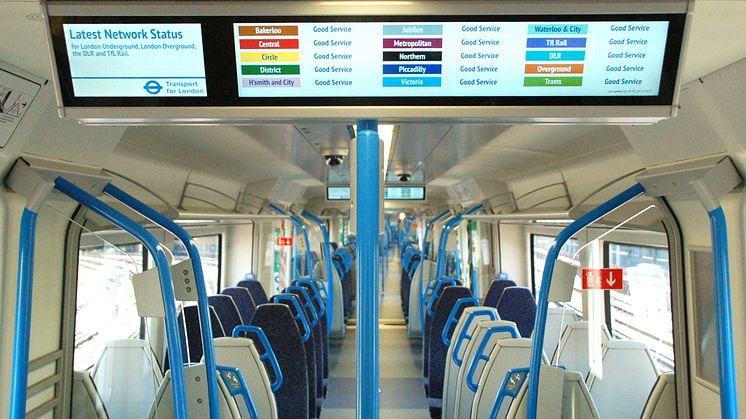
Press release -
GTR passengers ride UK’s first self-drive mainline train
- Services will run at Tube-like frequencies thanks to new technology
- 12 routes to cross London, speeding up journeys
- Helps boost capacity by 60,000 passengers in 2019
MONDAY, 23 MARCH 2018: Govia Thameslink Railway passengers have ridden the UK’s first self-drive mainline train in a major milestone for the industry.
The Thameslink trains will in future use the technology, developed by Siemens and operating on Network Rail’s new digital signalling system, to run between London St Pancras and London Blackfriars at a rate of a train every 2-3 minutes – a frequency never before achieved on Britain’s railways.
Automation will make this ‘core’ north-south connection across the capital the new heart of the region’s railway network.
It will serve 80 more stations than today on 12 separate routes, helping create capacity for up to 60,000 more people in each peak and speeding journeys for hundreds of thousands of passengers.
Delivered by the Government-sponsored £7bn Thameslink Programme, which also includes Britain’s biggest new train fleet and the £1bn upgrade of London Bridge station, it is a key element in GTR’s RailPlan20/20 modernisation plans.
GTR Engineering Director Gerry McFadden said: “Govia Thameslink Railway is blazing a trail with self-drive trains which can run at higher frequency than manual operations. We are embracing digital technology to boost capacity through the heart of London, an historical bottleneck that has held back rail expansion across the south of the country.
“Self-drive technology also has great potential for the rest of the country’s rail network, particularly on congested routes, and could in future reduce the need for costly infrastructure projects.
“This is a world-first in terms of the technology being used and a UK-first for self-drive trains. It’s a fantastic achievement and a vital part of our RailPlan 20/20 plans to modernise Thameslink, Southern, Great Northern and Gatwick Express on the busiest part of the UK rail network.
“We’ll always need a driver in the cab but this technology allows us to run more trains, more frequently than we could by driving the trains manually and for passengers, the trip will be as smooth as ever.
“Trains can run more frequently, which allows us to add 80 more stations to the Thameslink network across the south and east of England, speeding journeys for hundreds of thousands of passengers. Drivers and their union representatives have been fully consulted.”
The Siemens in-cab system uses optimum acceleration and braking on board the Class 700 Thameslink trains while maintaining a smooth ride for passengers. The driver remains in the cab to check the platforms at stations, close the doors, and manage the overall safe operation of the train.
Automatic train operation works with Network Rail’s new digital signalling system, which means trains can safely travel closer together through the central section of London with knock-on benefits for hundreds of thousands of passengers across the wider network.
Today’s trip from Peterborough to Horsham was a demonstration of the technology that will be put into use in 2019 when the service gradually increases to 24 trains per hour in each direction – the equivalent of a train every 2 to 3 minutes.
Twelve different routes will pass through the central section from places as far afield as Peterborough and Cambridge, and Brighton and Maidstone, meaning passengers will be less likely to need to switch to the Tube.
This automatic train operation is one of a series of innovations to significantly boost capacity on the most heavily congested network in southern and eastern England, creating space for 40,000 more commuters into London each morning and evening peak this May, and 60,000 by December 2019.
Martin Chatfield, Network Rail Project Director for High Capacity Infrastructure, said: “Seeing the first UK mainline train running in ATO for passenger services is a truly momentous day for the Thameslink Programme High Capacity Infrastructure Team, and the wider industry teams that have been involved. This underlines the combined efforts of Network Rail, the supply chain, and the train operators over the past five years to reach this point. It not only proves the digital railway technology within the heavy rail environment, but it also demonstrates that an industry approach is the way to solving railway capacity issues in the future.”
Mark Ferrer, Operations Director Digital Rail, Siemens said: “This brings to life the hard work and commitment from the entire Siemens, Network Rail and GTR team, collaboratively proving the operation of digital signalling and automation technology on a critical part of the railway infrastructure and realising the future of train control. This major milestone is the culmination of years spent testing in labs, on various test tracks and on the actual Thameslink Core with the new Class 700 Desiro City trains. The introduction of these technologies delivered in the UK, maintains Siemens’ position as a world leader in the application of leading edge solutions to the in train control systems, and new generation digital trains.”
Editor’s notes
For more information, contact GTR press officer Roger Perkins at press.office@gtrailway.com
Today’s train (26 March 2018) that ran under automatic train operation (ATO) between St Pancras International and London Blackfriars was the 09.46 from Peterborough to Horsham. This is one of the new routes that will be opened up from May.
- Automatic train operation (ATO) will initially operate between St Pancras and Blackfriars in May 2019 (22 tph), being extended to London Bridge in December 2019
- Under ATO, the driver presses a button and the system takes over, braking and accelerating automatically before bringing the train to a halt in the next station and opening the doors. The driver then checks the platform is clear, closes the doors and selects ATO again, and manages the overall safe operation of the train
- ATO uses the optimum acceleration and brake rates afforded to it which, with new signals and a new signalling system, allows us to run up to 24 trains every hour in the peak across this central section of the Thameslink route. This allows GTR to run more trains along an expanded Thameslink network, benefiting hundreds of thousands of people
- ATO works on top of a new signalling system called ETCS - or European Train Control System - which gives GTR drivers in-cab signalling and allows trains to run closer together. It overlays the existing system which can still be used as a backup
- Govia Thameslink Railway was the first Train Operator in the world to operate ATO over ETCS, with ATO testing commencing November 2016, following initial testing of ETCS, which commenced April 2016.
How this fits into GTR’s modernisation programme:
GTR is expanding the cross-London Thameslink network and simplifying timetables throughout the South East starting in May this year. This is central to our plans to modernise services. New trains, new rail routes and updated working practices will future-proof Southern, Gatwick Express, Thameslink and Great Northern where passenger numbers, in some places, have doubled in just 12 years.
Highlights of the proposed changes introduced incrementally May 2018-December 2019:
New expanded Thameslink network to give 140 stations by programme end (80 more than today) direct access to St Pancras International, Farringdon, City Thameslink and Blackfriars in central London, all via the new station at London Bridge, relieving the Piccadilly, Victoria and Northern Tube lines
Interchange for all 140 stations with the Elizabeth Line (Crossrail) at Farringdon from December 2018
70% more peak time seats between London Blackfriars and St Pancras International across central London by December 2019
Massive increase in number of Thameslink trains at London Bridge
New direct Thameslink routes through London between:
- Cambridge and Brighton
- Horsham and Peterborough
- Cambridge and Maidstone East (with some extensions to Ashford International)
- Luton and Kent Medway Towns (e.g. Greenwich and Dartford)
- Littlehampton and Bedford
- East Grinstead and Bedford
Faster, seamless journeys: Cambridge to Gatwick Airport 20% faster; Greenwich to Luton Airport 37% faster; 10-15 minutes quicker to Canary Wharf and Paddington via Crossrail (Elizabeth Line) at Farringdon
More spacious trains: 115 new Thameslink trains, many the size of 21 double decker buses.



